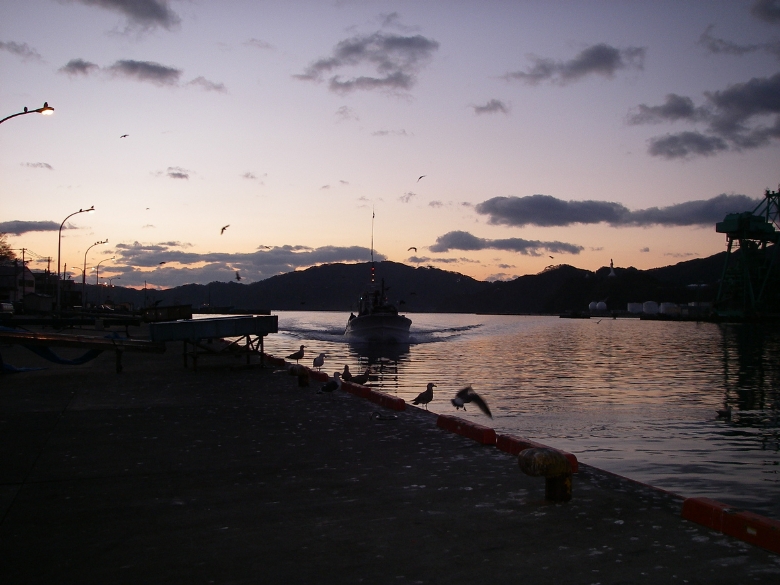Recovery
The Role of the Social Sciences of Hope: Overcoming New Challenges Together
Yuji Genda
Professor, Institute of Social Science

Beautiful morning glow near Kamaishi Harbour before the March 11 disaster, which has totally changed the locality. Photo: Ken Ohori, Assistant Professor, Institute of Social Sciences.
In the field of the “social sciences of hope,” even before the Great East Japan Earthquake we were already addressing the theme of people recovering from difficulties. In the field of the social sciences of hope at the University of Tokyo, we have been searching for ways to contribute to people recovering from disaster, and we can now help the University make a larger contribution to Japan’s recovery from the Great East Japan Earthquake.
The Institute of Social Science is one of the 11 research institutes established by the University of Tokyo. At the institute, in 2005, we launched a research project called the “social sciences of hope,” with a view to studying the relationship between hope and society to understand what makes a hopeful society, in response to the fact that at the beginning of the 2000s people began to feel a sense of stagnation, losing any sense of hope in their lives.
Some people criticized the project saying that it was impossible to study “hope,” a concept which lacks concreteness. In academic studies, however, we must always take on creative challenges. As researchers, we do not study something only when we are sure we will be successful or only when we will be able to achieve the results we want.
One of the most important findings gained through studies in the social sciences of hope is, as I have already described, the fact that people who have overcome setbacks have more hope for the future than those who have not. I give an example of this below.
Kamaishi in Iwate Prefecture, which is one of the cities affected by the disaster in March, faced two huge tsunamis before the Second World War. Subsequently the city experienced naval bombardment in the war, during which a large number of people in the city were killed or had their homes destroyed. Although the city was the birthplace of Japan’s modern steel industry, many citizens lost their jobs in the post-war industrial rationalization, and even the blast furnaces — a symbol of the city — were lost.
People who have managed to overcome setbacks have more hope than people who have not.
The citizens of Kamaishi, however, were resourceful. They revitalized the local economy by developing new technologies and diversifying their businesses. They set about redeveloping the city in a way that was appropriate for a smaller population. People in the city set a good example for Japan by striving to carve out a future with hope, taking pride in their home city where they were raised.
However, the city was hit again by the huge earthquake in March. At the present time, people in the city are hurt and exhausted from the disaster and we cannot easily talk about “hope” at this moment in time. Nonetheless, the city has a long history of overcoming challenges without losing hope for the future. The patience, solidarity, and capacity for learning of its citizens have been passed down from generation to generation in the “DNA” of the area. The city government endorsed this basic principle of “not giving up” in its recovery plan, and citizens will unquestionably overcome the present difficulties through trial and error. I believe it is our duty as researchers in the social sciences of hope to investigate and record the process of Kamaishi’s recovery and communicate the wisdom and creativity of its citizens to future generations.
Through studies in the social sciences of hope, we have identified three preconditions for local communities to maintain hope for the future: (1) to constantly rebuild their local identity (local characteristics and strengths); (2) to foster dialogue between citizens who have different needs and abilities so that they can share hope; and (3) to maintain the possibility of creativity and cooperation by diversifying and expanding people’s networks both within and outside local communities. In conducting research in the social sciences of hope, we will keep these preconditions in mind and support victims of the disaster in overcoming the damage by talking and sometimes laughing with them, sharing their concerns and taking action with them.



